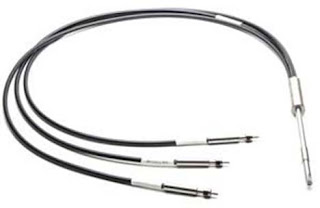Optical Fiber cable has a complex design and structure. This type of cable has an outer optical coverage that surrounds the light and traps it within a central core. The inside of the cable can be classified into two different ways – Single-mode and multi-mode.
Multimode optical fiber cable is way more powerful than the single mode. A multi-mode cable has a much larger central core that allows a greater amount of light to travel through it at once. The core of a multi-mode cable varies but usually it is 50/125 or 62.5/125 microns in size. Increased core size means that light can refract at a greater rate.
Benefits
- Certified cable.
- Consistent transmission percentage.
- Can be used within large capacity & high-speed networks.
- Can still achieve much greater distances than any other cable especially coaxial cables.
- Greater data-transmitting capabilities.
- High attenuation and dispersion.
Specific Applications
- Liquid absorbance analytical technique.
- Solid or liquid reflection analytical technique.
- Solid or liquid Raman analytical technique.
- Integrated component of a medical instrument.
- Individual light source.
Multimode optical fiber cables are extremely useful and are the primary thing of the fiber-optic networks. This type of cable is generally used for short distance.
WPI’s Fiber optic cable is the only certified cable available in the market. It captures the low level light events. The transmission percentage in this cable is so consistent that it gives us the desired perfect result.
Due to its large core, some of the light rays goes zigzag as they bounce off the cladding and others make up the digital pulse may travel a direct route. These phenomena cause the different groups of light rays. These different groups of light rays are referred to as modes. These modes are arrived separately at the receiving point. The pulse that is an aggregate of different modes begins to spread out while losing its well-defined shape. There is a need to leave spacing between pulses to prevent overlapping limits of the amount of information that can be sent.
In a core the refractive index diminishes gradually from the center axis out toward the cladding, meaning the refractive index at the center is the most. At the center the light rays moving down the axis advance more slowly than those near the cladding due to the difference in the refractive index. Because of the graded index, the light in the core moves spirally rather than zigzag off the cladding. It significantly reduces its travel distance. The shortened path and the higher speed allow light at the periphery to arrive at a receiver at about the same time as the slow but straight rays in the core axis. Though it takes the same time but as a result the digital pulse suffers less dispersion.


